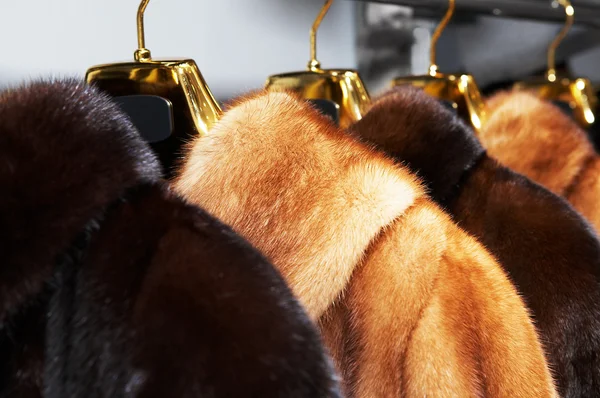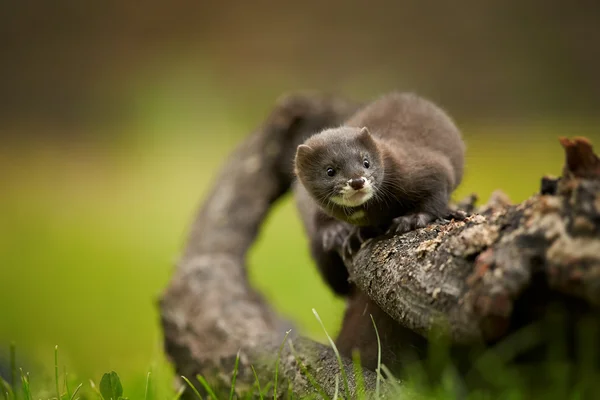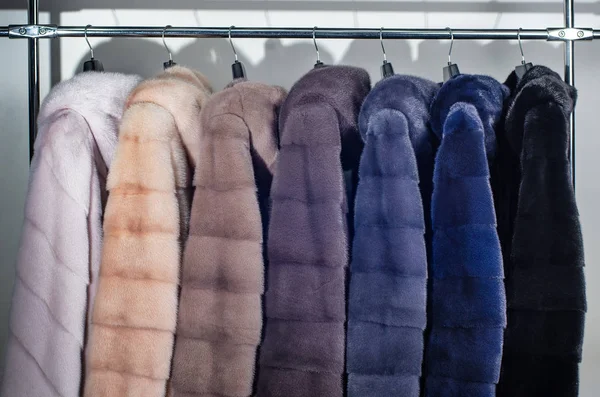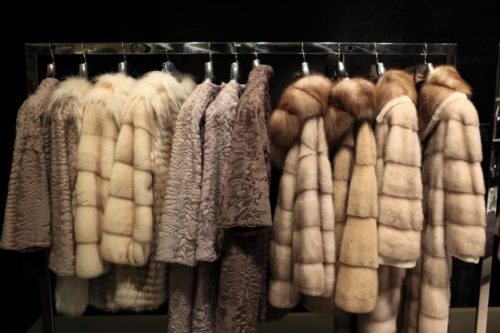Fur clothes have always been a symbol of wealth and luxury; in the past, they were worn only by royalty and wealthy people. Nowadays, it is more accessible to a wider range of consumers, but it’s still considered luxurious clothing.
But it’s not just a symbol of wealth – it is also a great insulator, as it can keep us warm during freezing winter days. There are many ways to wear fur garments, from coats and jackets to accessories, such as hats, gloves, and even handbags and boots.
Read our blog to learn more about mink fur.

Key Takeaway
- Mink fur became extremely popular after WWII for its soft, warm, and luxurious qualities and its versatility to be styled into various fashions.
- Mink fur predominantly comes from fur farms where minks are bred and raised in captivity specifically for their fur, though this practice raises ethical concerns.
- Proper certification labels like Furmark indicate responsible and ethical sourcing, while their absence suggests illegal or cruel methods.
- Alternatives like faux fur allow for the style and warmth of fur without the environmental and ethical issues, providing a sustainable option for consumers.
Overview of Mink Fur
The fur trade played a significant role in North America’s economic and social development from the 16th through the 19th centuries.
European colonial powers, such as the French, British, and Dutch, established fur trading networks with Indigenous peoples across North America.
These trades involved furs such as beaver, fox, mink, and otter, highly valued in Europe for fashion and luxury goods. This period was considered to be a Golden Age of fur.
Women of the upper class wore long-haired furs from many animals, such as foxes, skunks, rabbits, and muskrats, while short-haired furs were less popular.
However, after the end of World War II, mink fur coats became the new favorite and replaced other types of fur. And many women worldwide started wearing mink coats.
So, what’s the deal with minks?
It is incredibly soft and rich in texture. Also, it provides significant warmth, even on extremely cold days. Mink fur is very durable, and with proper care like caring for antique jewelry, it can last for years. It can be dyed and styled in many ways, giving various designs, styles, and color options.
For a long time, people have associated mink fur with being rich, fancy, and having a high social status. Many people still think wearing mink fur makes you look stylish and classy.
The American Mink Animal

Before buying your softest fur coat, here are some interesting facts about minks that you should know.
Minks belong to the Mustelids, a group of animals including other well-known species like wolverines, badgers, and otters. Some people say it’s similar to weasels.
These small mammals live in wetlands like marshes, swamps, rivers, lakeshores, and sometimes in forests and coastal areas.
There are two species: the American Mink and the European Mink. American minks are native to North America, while European minks are critically endangered and can only be found in fragmented populations in Europe and Eurasia (Russia).
American minks have a small, slender body, short legs, and a tapered tail. They have sleek, dark brown fur with a lighter underbelly. These animals are well adapted to their semi-aquatic habitat, as their coat is dense and waterproof.
They also have a dense underfur layer beneath their longer, shiny guard hairs, providing warmth and insulation in cold waters.
Minks are known for their hunting abilities and agility in catching prey on land and water. Their long, slender bodies can easily navigate through dense vegetation and aquatic environments, and their streamlined shape allows them to move quickly on land and water.
Minks are carnivorous animals that primarily feed on fish, frogs, birds, and other mammals like mice and rats. In rare situations, they will eat carrion. Their claws enable them to grasp and hold onto slippery prey such as fish, while their teeth are designed for tearing flesh and crushing bones.
Minks are primarily active at night since they are nocturnal animals. They have sharp senses of sight, smell, and hearing, essential for detecting prey and navigating their environment.
They are solitary and territorial animals that defend their home against intruders. They mark their territories with scent markings to communicate with other minks and establish boundaries.
Minks usually mate once a year, during late winter or early spring. After a gestation period of approximately 40-75 days, female minks give birth to a litter of 1 to 8 kits (young minks) in a den near water.
Mink Fur Farming
Mink farming began in the USA during the Civil War, over 150 years ago. In the 1870s, the Patterson Brothers initiated mink farming in Canada.
Through 150 generations of breeding, farmed mink are now larger and tamer than wild ones. They display a variety of natural fur colors due to selective breeding.
In North America, mink farming is the most significant fur type. If you want to know how much mink fur costs, read this!.
In the US, approximately 120 farms produce 2 million pelts annually, valued at $80 million. In Canada, 60 farms produce 1 million pelts annually, valued at $50 million.
Overall, mink farming accounts for about 85% of the global fur trade.
Minks are kept in special wire mesh cages to prevent unwanted mating and territorial behavior and to protect them from predators. These cages also ensure hygiene and ventilation.
Their diet includes meat-based food like fish, poultry by-products, grains, vitamins, and minerals. Veterinarians give regular health checks and vaccinations.
Selective breeding enhances fur quality, softness, and color.
The fur is harvested when minks are 6 to 8 months old. After euthanasia, their pelts are processed, tanned, dyed, and made into various fur products. Animal parts are used for biofuel, promoting sustainability.
While some consider fur farming animal abuse due to limited space and behavioral restrictions, others advocate for better living conditions to allow natural behavior and social interaction. Consequently, some countries have banned mink farming.
Sourcing Mink Fur

Fur is usually obtained from farms, where the animals are bred and raised only for their fur. These farms are carefully controlled environments where minks are raised in captivity and undergo selective breeding to produce desirable fur characteristics.
Mink breeders believe animals are bred humanely, with plenty of food and water. The only drawback is that the animals are kept in captivity, but that’s due to protection from undesirable breeding, predators, and territorial behavior.
The mink supply is completely reliable on farms, and illegal hunting and smuggling of wild mink populations is prevented.
The trapping and killing of wild animals for their fur is seen as inhumane, unnecessary, and, in many countries, illegal, especially when there are alternatives like synthetic fur or other materials available.
The fashion industry has used animal skins and fur, leading to the extinction of wild species, including the sea mink, and endangering many more.
Therefore, animal rights groups advocate for replacing real fur with faux fur, as faux fur can mimic the texture and appearance of real fur.
Ethical Mink Fur Sourcing
Using animal skins and fur for fashion and accessories raises ethical, environmental, and social concerns. Animals like minks, chinchillas, foxes, rabbits, and raccoons are usually bred in small, confined spaces.
Established in 1976, the Farm Animal Rights Movement (FARM) is a non-profit organization that promotes animal rights, veganism, and sustainability nationally.
FARM has been a leading advocate for farmed animals and has long campaigned to stop using animals for food, distinguishing itself as the sole national organization focused on this cause for many years.
Some people and animal activists suggest using open cages for fur animal farming to provide more space for animals. Then, they can have more opportunities to exhibit natural behavior: animals would have access to platforms, hiding spots, the outdoors, and a more stimulating environment.
Nevertheless, critics argue that animals can experience stress, confinement, and other welfare issues, even in open cages.
Farming animals for fur also cause severe environmental damage, regardless of the type of cages used. The process requires significant resources, such as water and land, which can lead to pollution and habitat destruction.
However, an ethical alternative exists for shoppers who want to reduce fur farming. Faux fur options are now widely available, offering the same comfort and style as real fur. While faux fur production may cause some environmental pollution, it is still a more ethical alternative to real fur.
Ethical shoppers can help reduce the demand for real fur and the associated environmental and animal welfare issues by choosing faux fur.
Key Considerations for Mink Fur

Why is this type of fur the most wanted?
It’s considered one of the densest and softest furs. Many want to wear something as warm and soft as a cloud. It is resistant to matting and shedding, making it durable for a long time.
The coat of the highest-ranking mustelids is exquisite and perfect for any fashionista. Fur designs come in various styles with innovative cuts and patterns. They often feature simple silhouettes, clean lines, and neutral colors.
But there is something that you should pay attention to when buying it:
Look for labels like the Furmark or Origin Assured. These labels indicate that the fur used in clothing is obtained ethically and responsibly. Labels show strict quality control and proof of animal welfare standards and regulations.
Avoid buying fur garments without these labels – the fur was likely obtained from wild animals, which is illegal and cruel.
Summary
Soft and shiny fur makes mink a top choice in the fur industry.
However, while it remains a luxurious accessory for many consumers, there is a growing belief that breeding animals for fur is an unnecessary and inhumane practice in the 21st century.
With various alternatives available, fur farming could be replaced with more sustainable and animal-friendly methods.
Nonetheless, the demand for fur clothing still exists within the industry.
